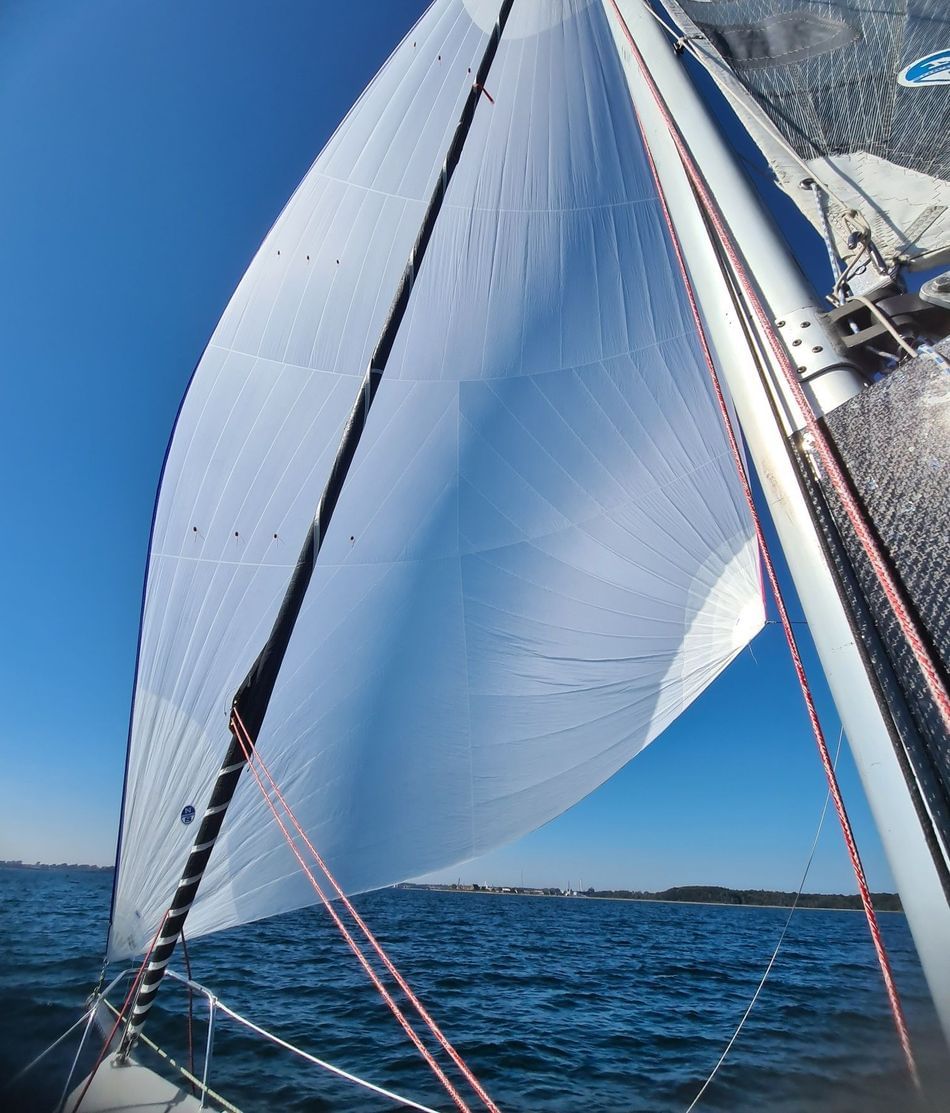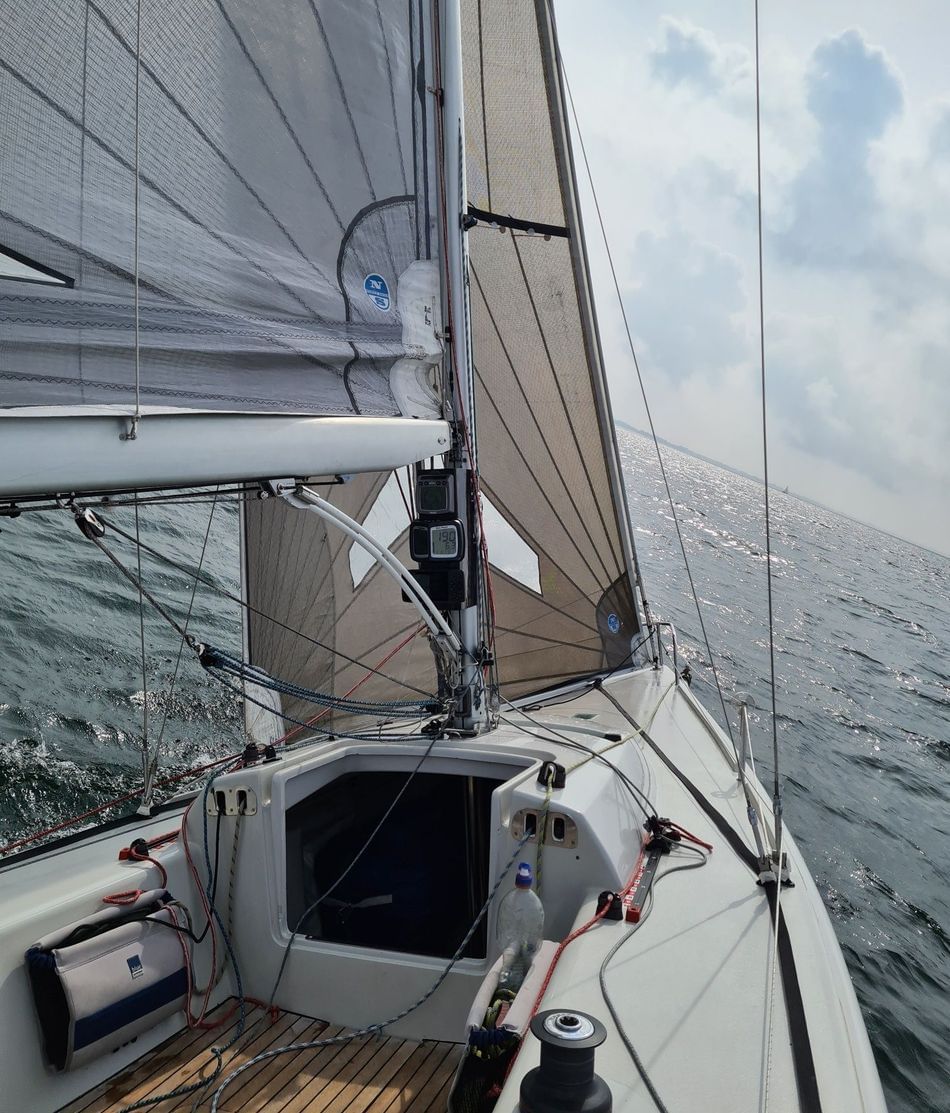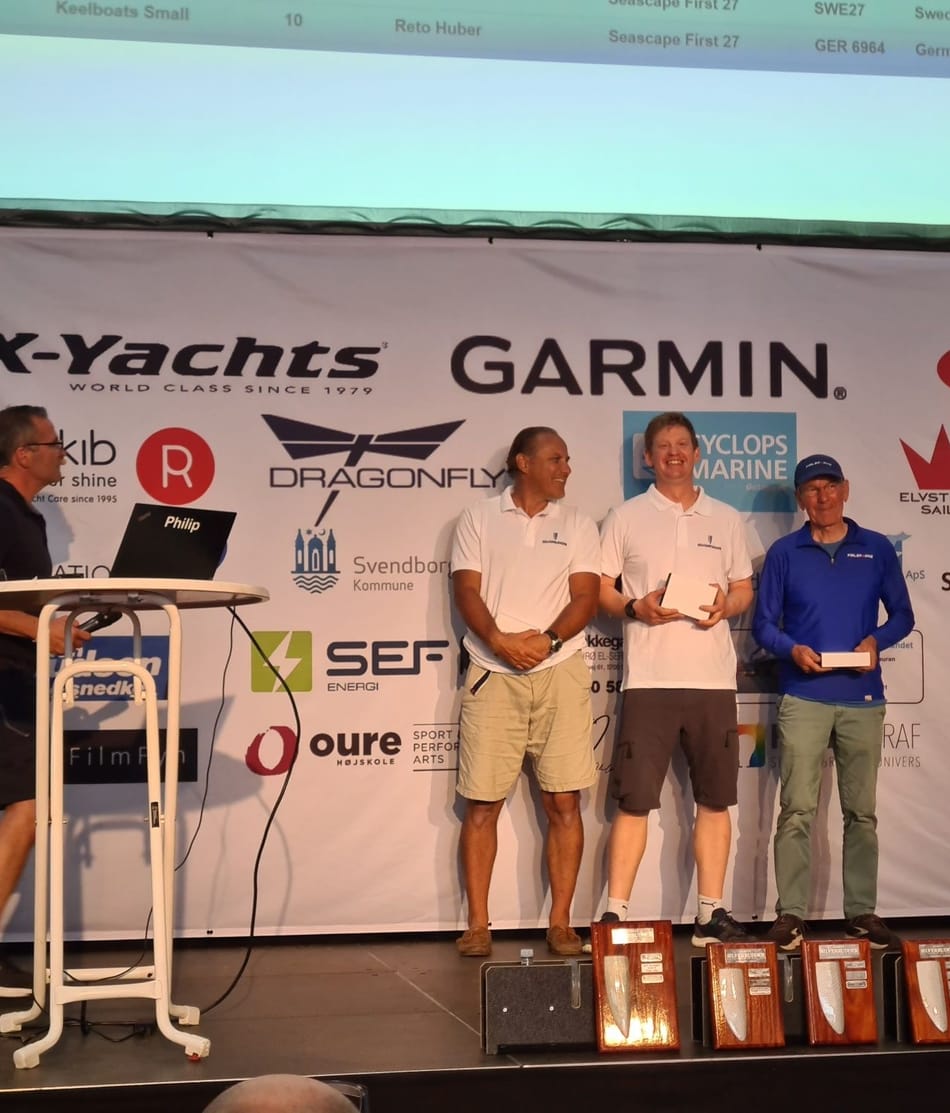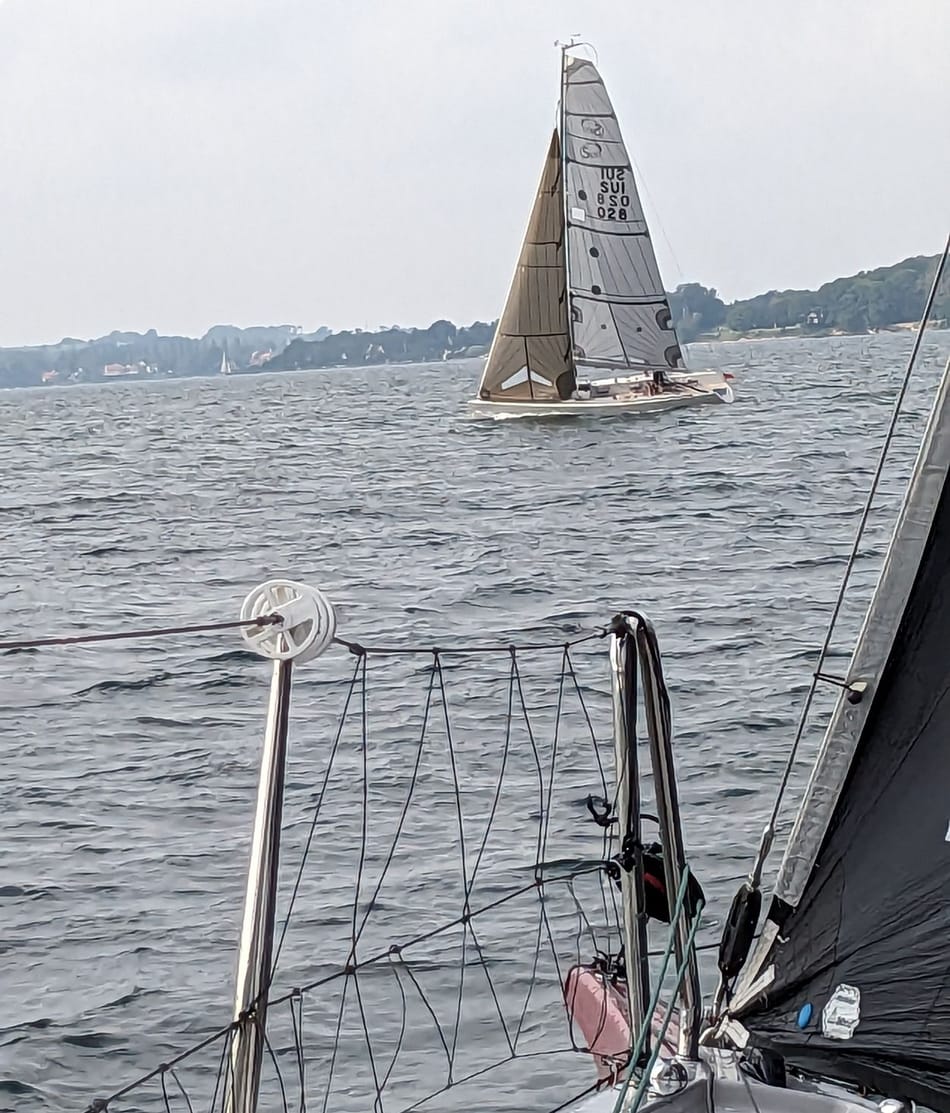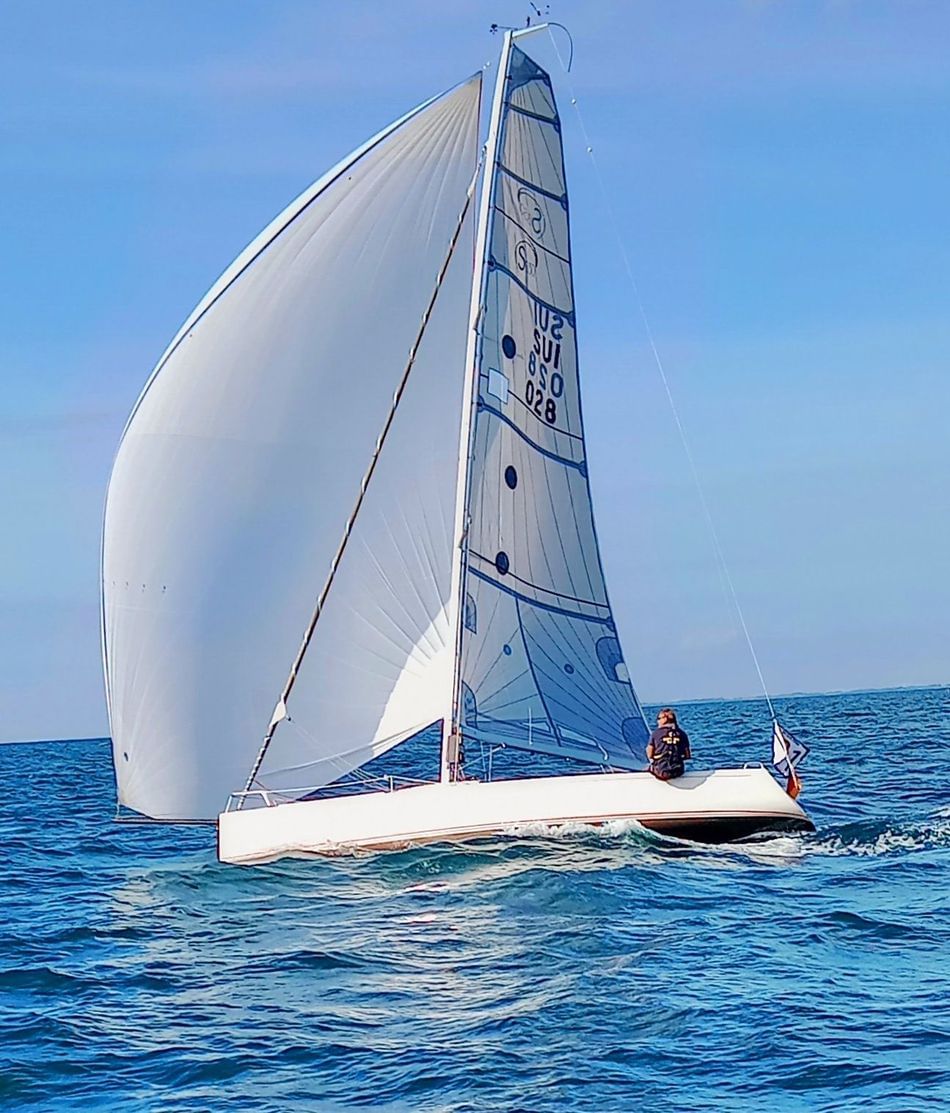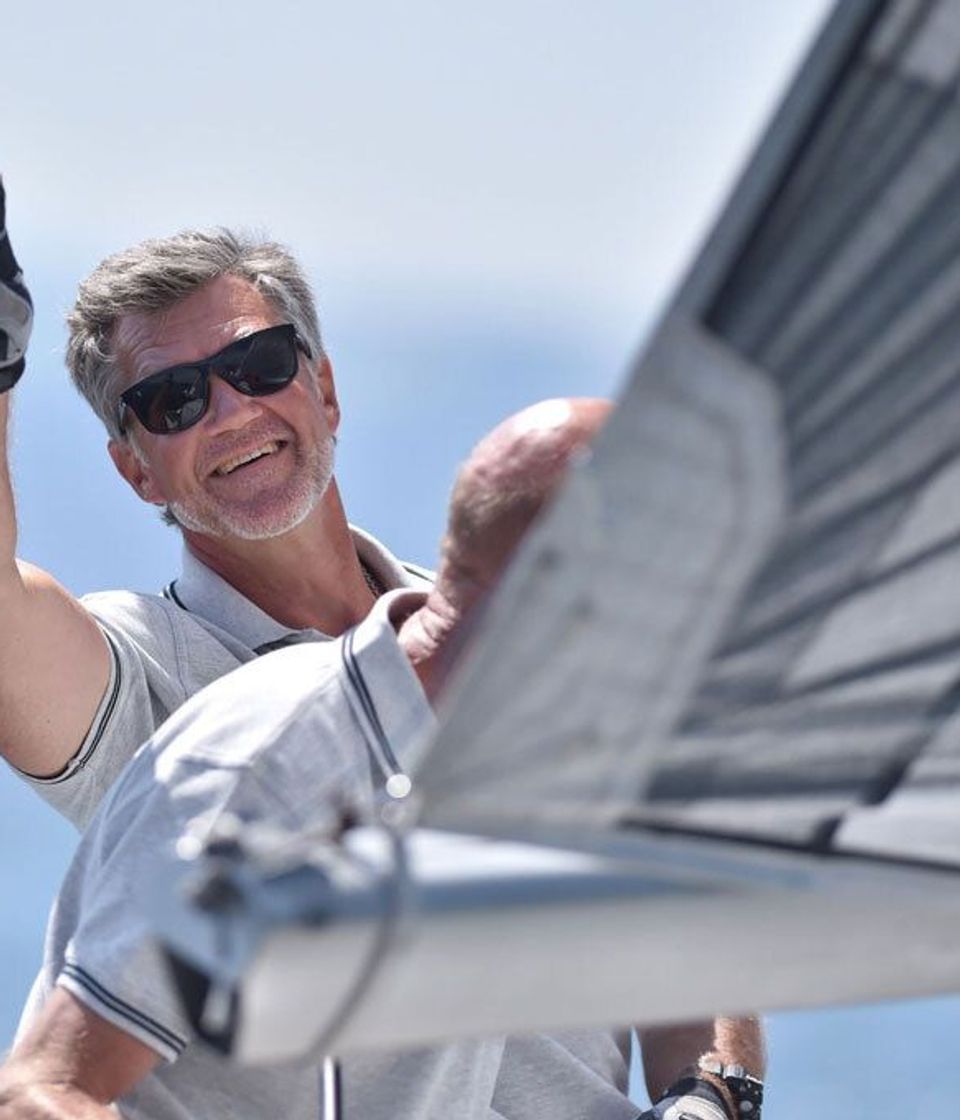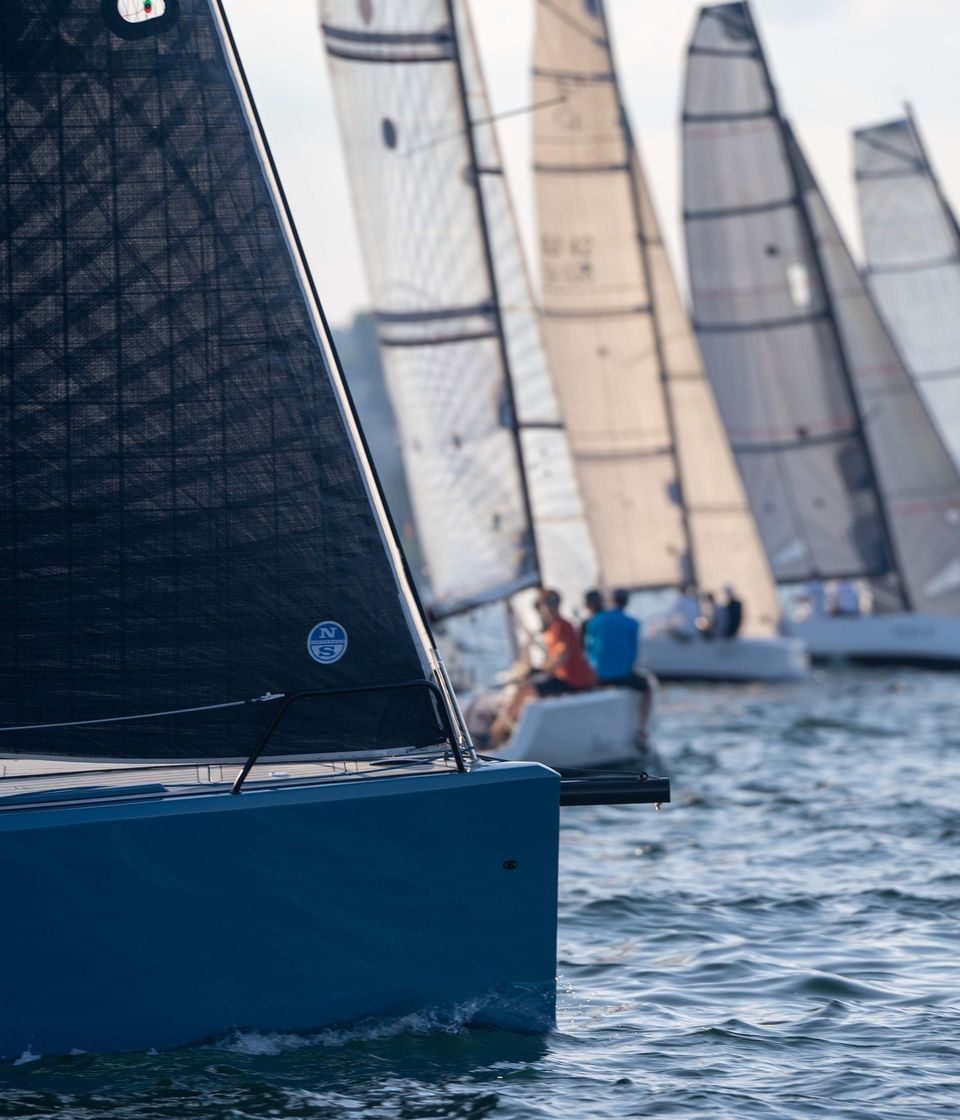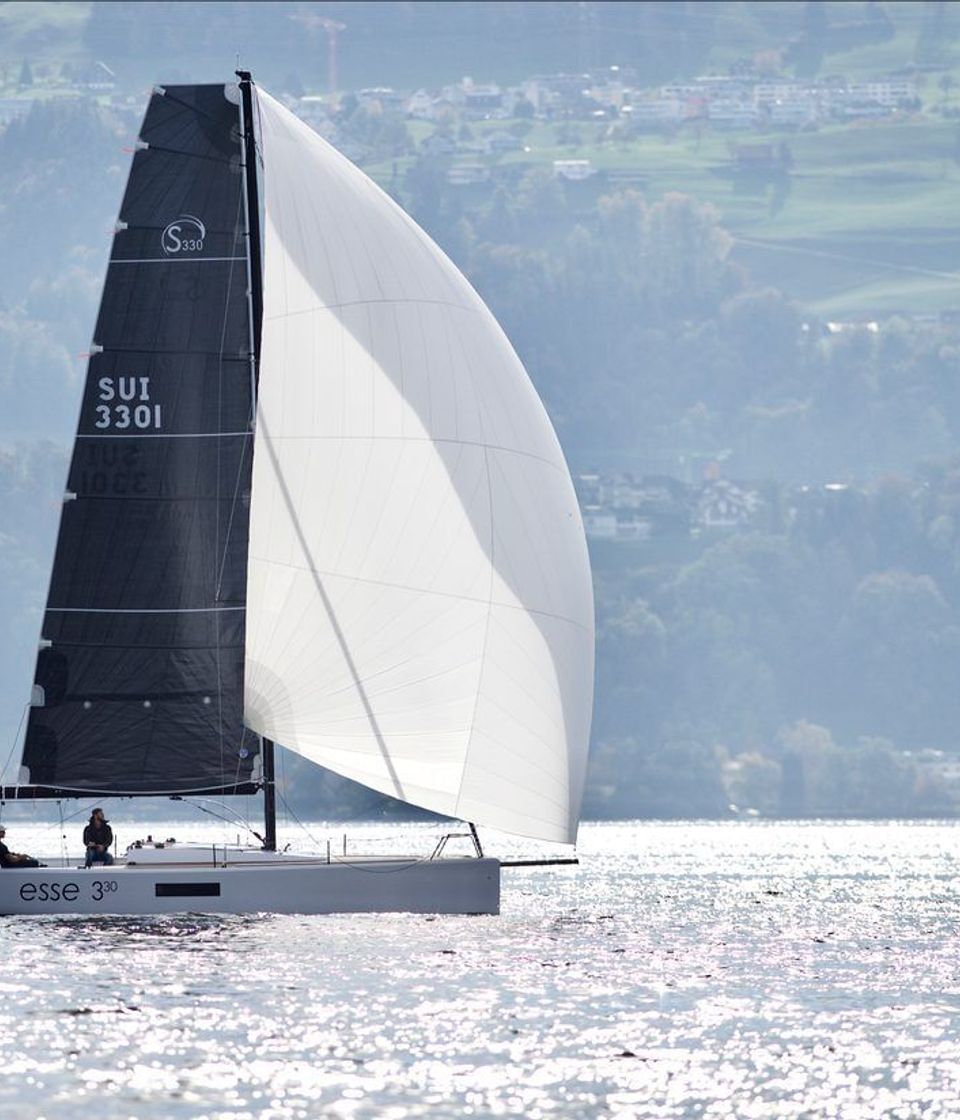Success for Esse 850 at the Silverrudder Challenge
15. December 2023
At the legendary Baltic Sea Race, Patrik Heinrichs opted for an Esse 850 – and delivered a strong performance. Here is his regatta report.
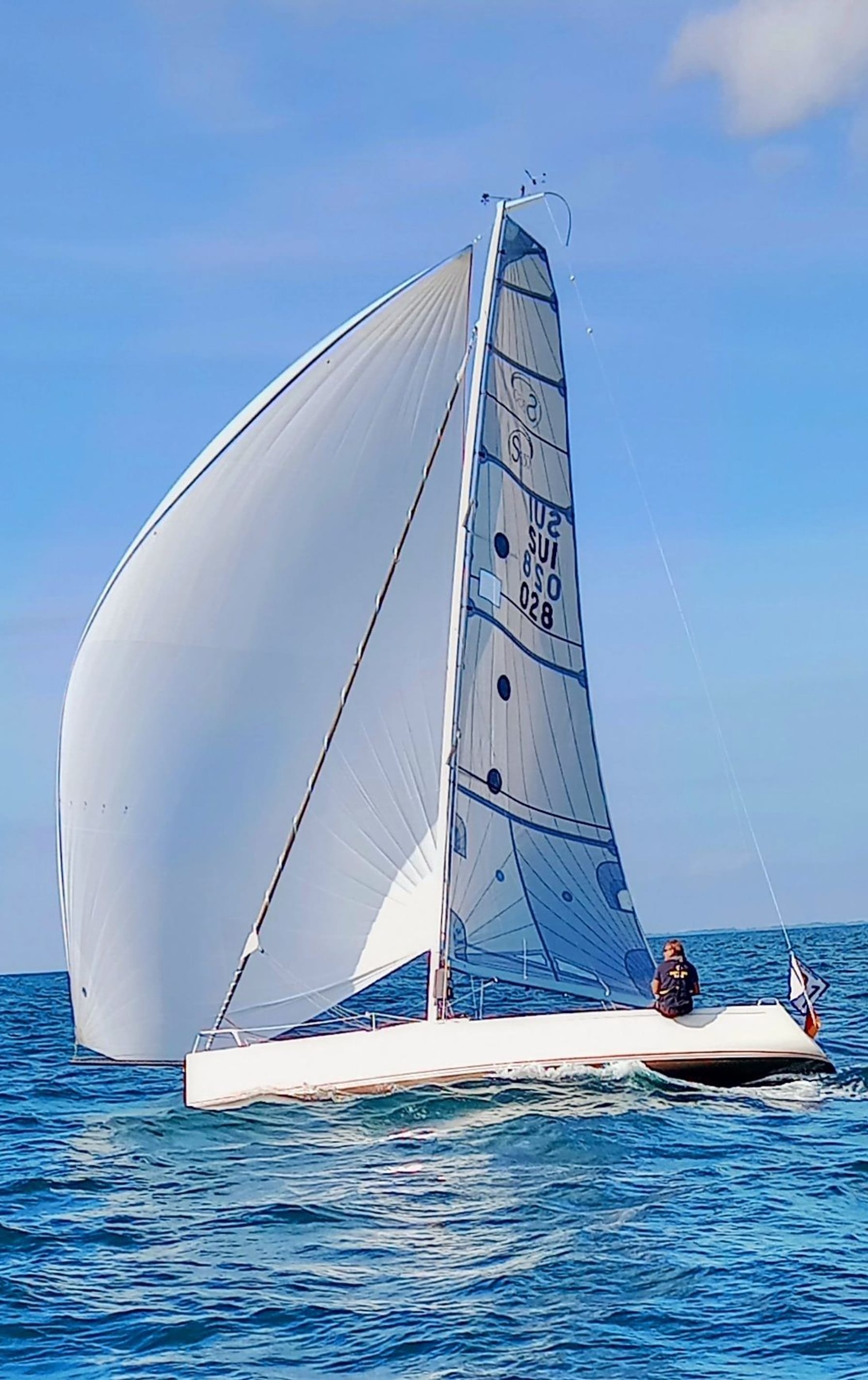
At the Vegvesir Race 2022, Franz "Firlefranz" Schollmayer suggested that I try the boat of his club mate Michi Starck. It was very well maintained and equipped. At the time, I was looking for "the next step" in sail boats. Since 2009 I had experienced a lot with my Swedish beauty, JYNX, a T-24, we had even undertaken a few trips. The focus was always on performance and not so much on comfort.
Since 2016, I had started participating in shorthanded offshore regattas with her with her and finished seven times in a row at the Silverrudder, which is the largest single-handed regatta in the world. I had a pretty good record in the MINI class (up to 25 feet LOA) (4,2,1,2,1,5,2).
However, I had to admit to myself that the physical demands of working on a boat with limited stability and only three crew members left a mark on my back, which was no longer that of a 21-year-old laser sailor – especially after 24 hours in the sailing harness.
I started to search for a boat with more (weight) stability and a heavier keel with sports boat-like sailing characteristics, and the Esse 850 seemed a natural fit. I had known the boat since its first successful finish with Josef Schuchter at the Sportboot Euro 2004 in Brunnen.
At the end of January 2023, I was able to view GER 28 "Flagranti" on the Rhine. After a few weeks, I made the decision to switch over to the Esse camp. This also meant I needed to change to a new classification category, the 25-30ft class. Here, a group of competitors was waiting to take me on – with extremely powerful boats such as the Dehler D30od, SSC27, J88, the brand-new Aeolus P30 and, of course, "Firlefranz'" Corsa 915, which been upgraded to make it even faster.
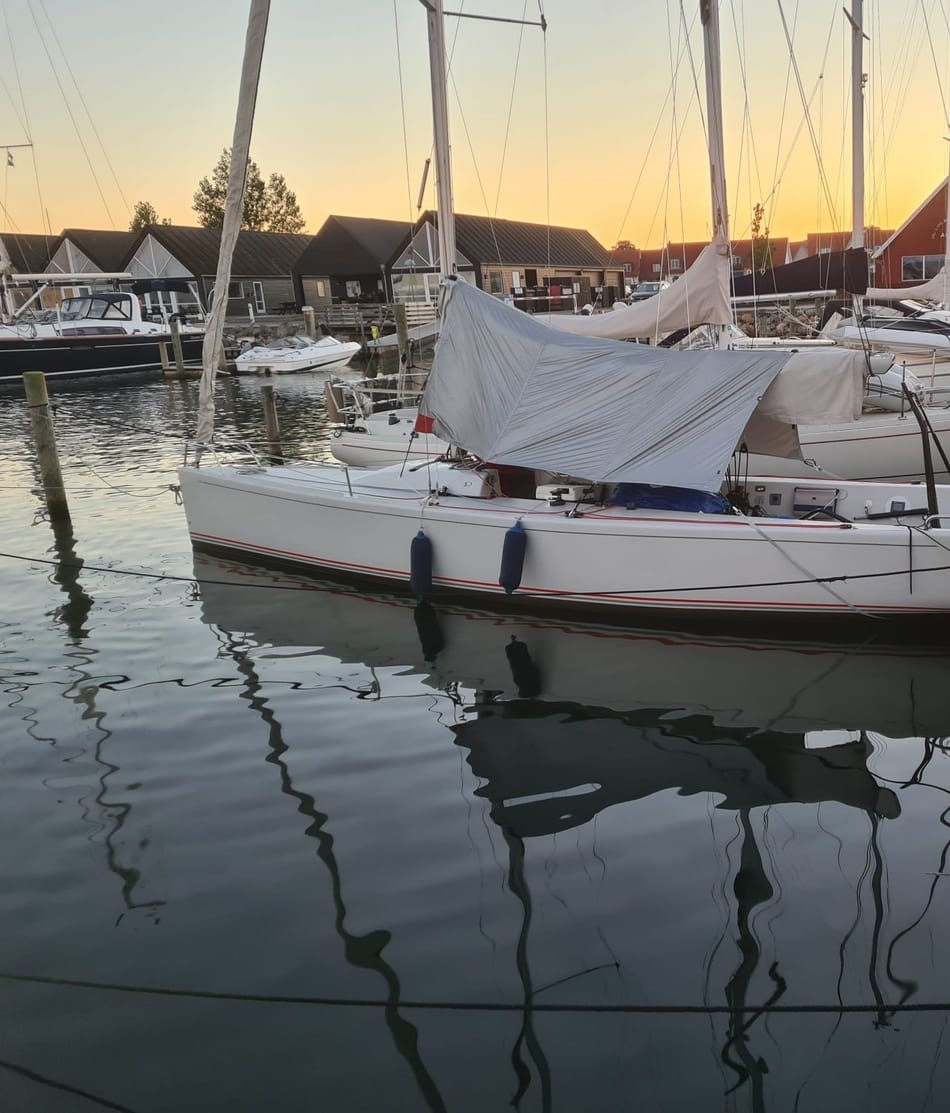
The process of selling my old boat and taking over Michi Starck's boat took until the beginning of August, and now time was running out for me to comepete the first planned race in early September, two weeks before the Silverrudder. The boat was put in the shed and I spent three and a half weeks in "seclusio,” so I could get it ready for the 135 miles offshore around Fynen. I received a lot of support from the Schuchter shipyard and especially from Franz.
Unfortunately, I had to skip the Vegvesir race and watch as Franz, with his Corsa 915, was able to secure a victory over Jan Hansen in the Aeolus P30 and the Dehler D30od. That was the benchmark for my own competition. The question was: How could the Esse 850 beat such high-caliber opponents, boats that were specficially designed and built for this type of shorthanded offshore racing?
In the remaining time until the regatta, I wanted to get to know the boat as well as possible and sort out inevitable little "issues" of every new boat , so I could be prepared as well as possible for the Silverrudder ten days later.
I took advantage of the perfect Danish sailing weather in September (always over 20 degrees) for a combined training and vacation session, with eight days of sailing around Samsö, Tynö and north-east Fynen. With each day, my confidence of being "on the right boat" grew, and the questionmarks in my mind became a little smaller.
On Silverrudder race day, the weather gods were in a a good mood and brought us 10-16 knots at the start in the narrow Svendborg Sund, with a 3 sm cross and a 2sm anchorage to Thyrö's Rev. From there, we were able to sail around 35 miles under a gennaker to the north-eastern tip of Fyn. My start to leeward in the pushing current was not optimal, as 10 seconds before the shot an X79 on starboard bow had set off to sink me, but with 70 single-handed competitors and limited space on the line a maneuver like this has to be taken into account.
At the beginning I tried to get out of the pack as much as possible, and thanks to the boat's excellent cruising characteristics, I managed to catch up with the front runners Max Gurgel on the D30od and "Firlefranz" on the Corsa, and narrowly overtake Franz.
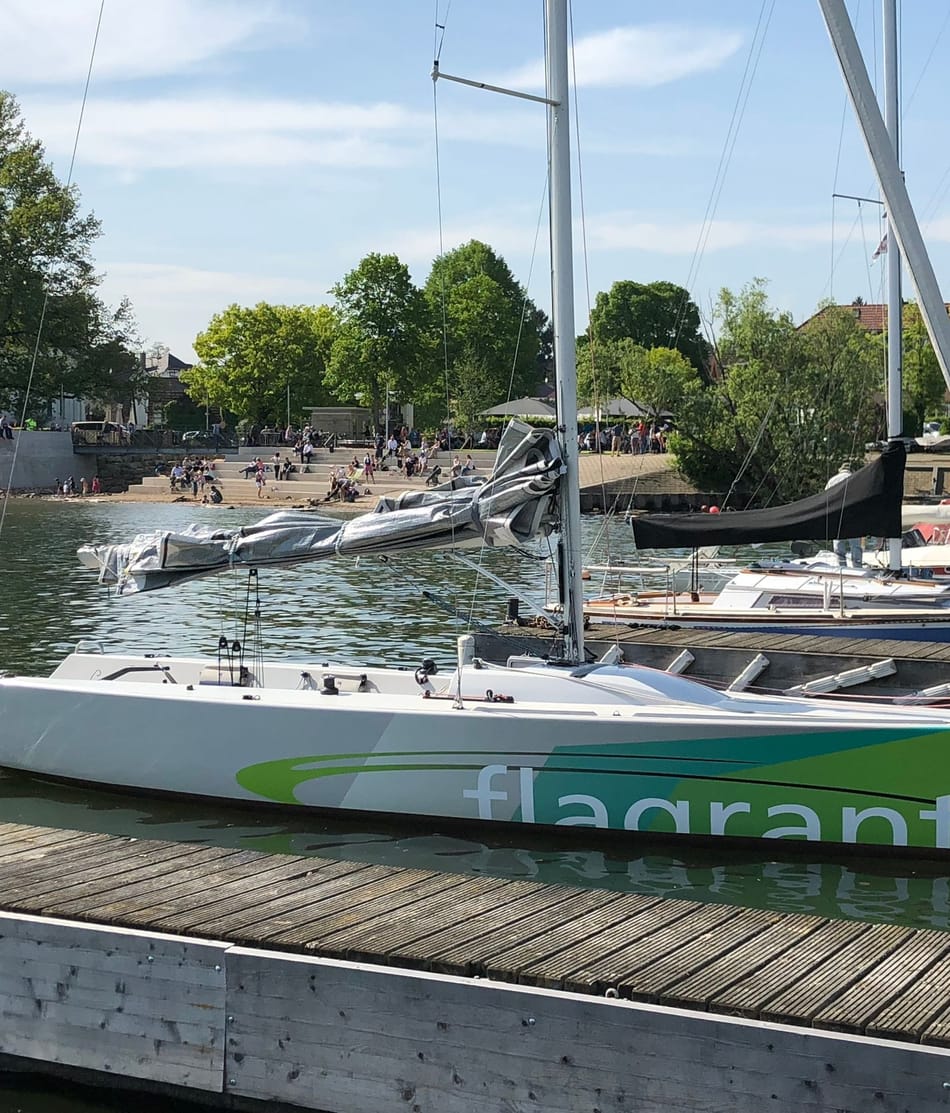
Admittedly, I had gotten a little cocky, and I broke one of the few SR rules, "You never win the race on the first miles." I took the second to last corner of the sound a little closely. There was a crunch under the keel. Shortly afterwards, the same spot became an issue for co-favorite Jan Hansen on the AE P30. With a quick tack, a little loss of time and some hurt pride, I was able to get back into the chase, but Jan was unfortunately out.
Things continued to go well, and at Thyrö's Rev I was able to take the "inside bend" ahead of Franz and Max and was suddenly ahead, but only briefly, because suddenly my spinnaker, which had already gotten stuck, caused trouble again and had to be collected by shooting head to wind. Max passed me by a boat's length.
We took another look at the wind angle, and at the last minute decided to use the reacher instead of the big runner, which turned out to be a good decision as the wind was initially a bit too strong. We left the jib standing, and with this approach we were able to travel unexpectedly fast – so fast that after a few miles we not only caught up with the Dehler 30od by Max Gurgel to leeward but had even left her astern.
In hindsight, Max had to admit that this gave him a few grey hairs, as he normally had the fastest boat in reaching conditions. It wasn't the first time I'd been in the lead in the SR, but I hadn't expected it to be like this. The rest of the fleet behind me was also slowly getting smaller, and after 15 miles of sunny space wind course we were at the Great Belt Bridge. We had to make the decision about which of the passages we shout take: to thee left a shorter but flatter route; to the right more clearance, but also more of a diversion. I had carefully tested the preferred passage bends on my "vacation trip", but when you approach them at almost 10 knots under Genni, you always get such terrible images in your head – like, whether half a meter of safety margin is enough to separate the mast from the concrete. Especially as there was nobody in front of me to serve as a scout.
But everything went smoothly, and as the course after the bridge became deeper for the next 20 miles, the reacher went down and the big runner was set. The journey continued towards Fyns Hoved on the north-east corner of the island. From there, we would turn 90 degrees left towards Middlefahrt. One by one, the last boats in the MINI class that had started half an hour before us were collected.
Only the Melges 24 and a Streamline were still ahead of me when the jibe was due at the north corner of Fyn, while the boats in my group were a mile behind. The wind seemed to be shifting a little, and so the Genni was able to stay up for the next 15 miles towards Middlefahrt. With an average BSP of 10 knots, it ensured a record-breaking pace, and we had never reached the halfway point at Aebelö, a peninsula in the Samsöbelt, so early.
After that it got a bit too nippy for the gennacker and we continued downwind in 8-10 knots of wind towards Fredericia, the entrance to the passage with lots of currents and often, light-winds between the mainland and the island of Fynen. Slopes to the right and left, a narrow fairway, a few bends and highly unpredictable current and wind conditions had turned many races in the past upside down.
Four miles from Fredericia, the Hungarian had suddenly caught up to me on his Flaar 26, and after I realized that with his special J0 and the wide stern of his boat he simply had a little bit more boat speed at this wind angle, I was forced to counter with the C0, which was actually too big. I had borrowed it from the current owner of Firlefranzen's boat, as there wasn't enough time to build a new one. I realized during a test sail that it was simply monstrous.
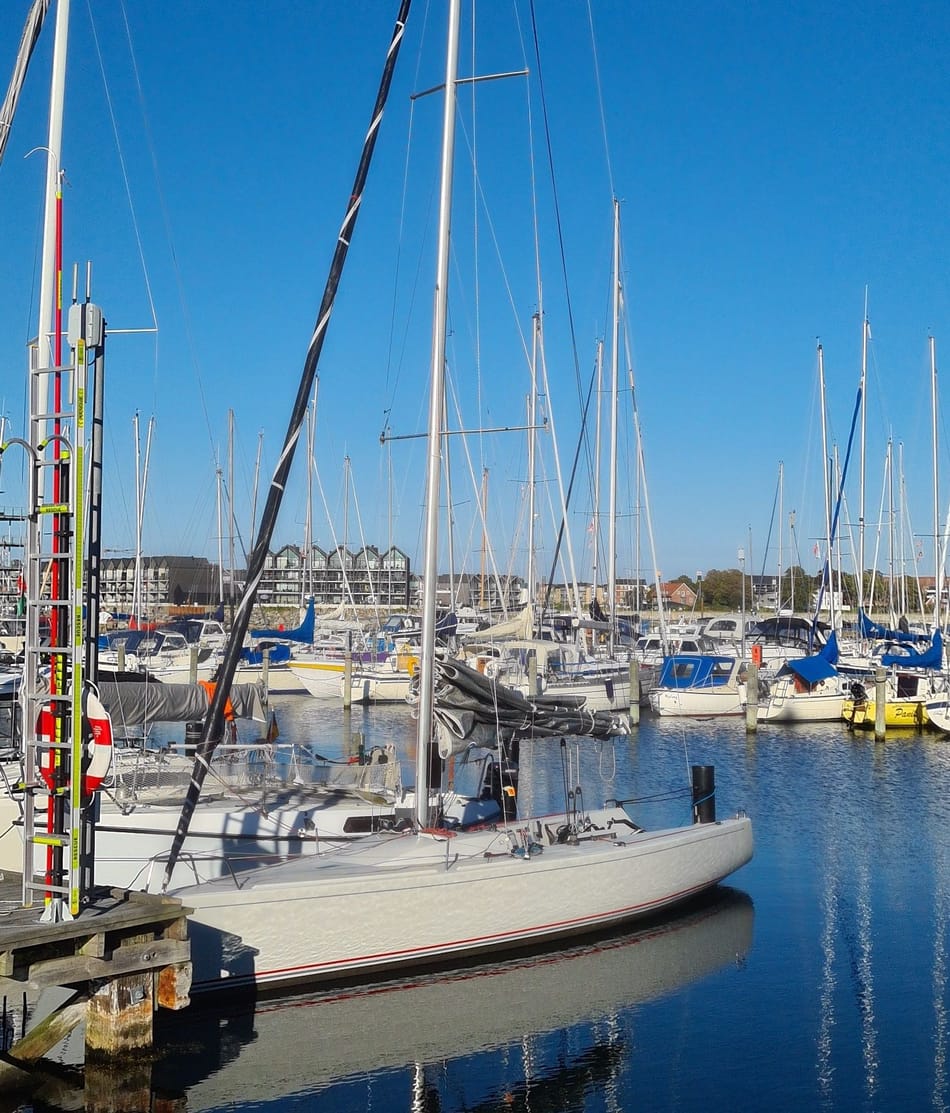
Fortunately, the wind dropped towards the first bridge, and I was gradually able to catch up with the Flaar 26.
In the meantime, it was slowly getting dark, which didn't make it any easier to recognize the edges of the current and the bows in the doldrums that had now set in. Despite 1.5 knots of counter-current and only 3.4 knots BSP, we passed the big bridge now headed right under the runner against the current for another 1.5 miles into the night in the increasingly calm wind. The Esse did a good job and after a few gybes I was able to take the lead again, albeit briefly.
That changed when a dark shadow set over me to windward in the form of the fastest boat in this regatta, a 33-foot full-carbon Tri "Black Marlin". Unfortunately, it wasn't really fast in these conditions and so I was to leeward of it, and the Flaar was over again. This went on for two more times, and I must have cursed under my breath until we turned left into the Little Belt near Bagö and found reasonably good sailing conditions again.
It was only 45 miles upwind home from here, and the Esse was in her favorite sailing condition. With 6-8 knots of wind on the nose at the beginning, we flew through the flat water, the Flaar with Georgy first quickly got bigger, then quickly got smaller in the stern water, so we led the field again.
But where were the others? The competition had kept me so busy for the last two hours that I hadn't even looked for them on the tracker. Max and Franz had sailed with others through the narrow passage, and I had a lead of about 1.5-2 miles. But what could the Corsa and the D30od with their large water tanks (200 liters) do on the cross to home in what was now 12-16 knots TWS?
It soon became clear. The numbers on the tracker revealed the whole truth. Max Gurgel, last year's winner who came in second in 2021, was not exactly a sailing novice either, was sailing around 0.2-0.3 knots faster at the same angles to the wind. Mathematically, that meant another 3-4 hours until he would reach me. But we still had 8-9 hours ahead of us. It turned out that way, and despite my attempt to lure him into the less wavy waters between Lyö and Fynen with me, there was no way of matching his pace upwind that morning, let alone catching up again.
With less than 12 knots of wind and few waves, we were equally fast, but he consistently covered, and I was always forced to sail a little more extreme, which rarely brings advantages.
As the sun rose at 6 am, it dawned on me that I would probably only come in second this time, and so I enjoyed the last few miles to Svendborg into the sound. Back in the harbor after 22 hours and a nominal 135 miles (the last eleven (!) hours of which were upwind), I slowly began to realize what a long journey the boat and I had been on since I took it out of Michi's shed at the beginning of August, refitted it for three and a half weeks and only sailed it for seven days. Therefore, we do see this as a really good start to a new story rather than a defeat, after we had been in the lead for three quarters of the race.
Thanks again to Michi for the great boat, to Franz and Helmut for all their help and to Josef Schuchter, who had a vision 20 years ago and didn't allow himself to get off course – even if he probably didn’t have the rough Baltic Sea in mind as a sailing arena for the Esse 850. But I can assure you, she does really well in salt water!
Patrik Heinrichs & „JYNX too“ GER 28
